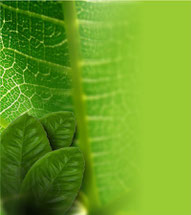Herbs - Medicinal Plants
Thyme Plant. Properties. Health benefits
Identification and origin of Thyme

Scientific name: Thymus vulgaris
Thyme is a perennial shrub from to the Labiatae family that reaches about 15-30 cm tall. It´s bushy with small leaves shaped ovate to lanceolate, in these leaves there´re tiny hollows stuffed with a drop of essence.
At the ends of the stems grow inflorescences in spikes of 3 to 6 flowers. The most characteristic feature of this plant is the intense essence it gives off, is the classic scent of thyme, due to essential oil containing (thymol). The leaves of the variety Thymus citriodorus are wider and with lemon scent.
It´s not known the time when the thyme was first cultivated in Europe. Some scholars believe it was the Romans who introduced the plant in England, while on the other hand, there are indications that the plant began to be popular in the north of the Alps between 850 and 1250. In the XVI century the Thyme was already cultivated everywhere.
It is a plant known since ancient times; the Egyptians used it in the embalming and later the Greeks used the plant to scent. The Romans also used the thyme in their baths.
Content – Active ingredients of the Thyme
The main active ingredients of Thyme are the essential oils although contain other substances.
Essential oil (Thymus vulgaris 1.5-2.5%, Thymus zygis 0.3%) of variable composition depending on the type of plant, the components in largest amounts are the thymol and/or carvacrol, and other quantities of geraniol, terpineol, linalool, trans-tuyanol-terpineol.
Flavonoids: derivatives of apigenol and luteolol.
Phenolic acids: caffeic, rosmarinic.
Abundant tannins (10%).
Saponosides.
Health benefits of the Thyme
The essence of Thyme is responsible for the following benefits: toning, appetite stimulants, eupeptic, choleretic, spasmolytic, expectorant, antiseptic, anthelmintic and antifungal. Phenolic acids and flavonoids reinforce the antiseptic action, and the latter also gives a diuretic action.
Thyme has been used against whooping cough, chronic inflammation of the bronchial tubes, asthma, stomach pain, digestive disorders and diarrhea. It´s also been used as a mosquito repellent. It has expectorant effects, which make it special in inhalations for dry cough and bronchial tube. It energizes, stimulates, tones, strengthens, cleanses and purifies.
Due to its properties, the thyme is indicated in respiratory conditions: colds, flu, sore throat, irritating cough, tonsillitis, bronchitis, asthma, emphysema. In digestive disorders: biliary dyskinesia, slow digestion, chronic gastritis, flatulence, gastrointestinal spasms, parasites, colitis, anorexia, asthenia, convalescence, cystitis, urethritis, pyelonephritis.
For external use: dermatitis, boils, skin infections, dermatomycosis, vaginitis, conjunctivitis, otitis, rhinitis, sinusitis, rheumatic pain, stomatitis, dental pain, alopecia, ulcers, bruises, sprains, burns.
Uses of Thyme
Contraindications
As with the other essences, must remember that the thyme can lead to allergic reactions, especially in children, and in excessive doses can even cause seizures. In general, is not recommended the use of this substance for long periods of time.
The thymol, at high doses, can cause liver toxicity, albuminuria and hematuria. Prolonged use of thymol-based mouthwash can cause thyrotoxicosis.
Preparation and Dosage
Internal use:
- Thyme infusion: A teaspoon per cup, infuse for 10 minutes. Three cups a day, before or after meals.
External use:
- Decoction: 50 g/l, boil for 3 min, applied in the form of compress, lotions, baths, mouthwashes, gargles, nasal or ear instillations, douches, etc...

 Pharmacognosy´s topics - Medicinal plants
Pharmacognosy´s topics - Medicinal plants





























